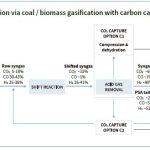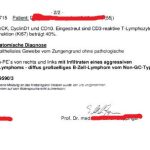Frankfurt Old City
This page is based on information taken from the work “Frankfurt Old City – A Morphological Approach” by Pınar Sözer Istanbul Technical University, Faculty of Architecture, Department of Urban & Regional Planning,
find the link to the original work at the bottom of the pages.
Urban morphology, Old city Frankfurt, urban form, historic city centers
In the rebuilt cities in Western Europe the whole pattern of urban reconstruction shows strong evidence of continuity and persistence. No case of abandonment is on record. The economic bases and growth patterns of cities have not changed significantly. With few exceptions, cities and towns have been rebuilt on the same site, and the new city centers occupy the same area as before the war. There are few massive land-use changes. No effort has been made to create a new urban pattern designed for protection against future war. (Grebler, 1956)
To follow the continuity and discontinuity in urban patterns, it is an excellence case to observe the gigantic process of European cities. Theoretically, destruction and reconstruction provides a great opportunity to redesign the city, and a chance to plan a arrangements of land uses within cities. It seems also an occasion for physical and social improvements of urban facilities.
A study 10 years after the Second World War II undertaken with the aid of J.S. Guggenheim Memorial foundation in 1954 about 28 cities show in European countries remarkable results. The studies about the development of the city centers show an evidence of change in certain respects. Altered street patterns develop to accommodate modern traffic or less building coverage, lower residential use. The new city blocks are usually much larger and more efficient, modern, technically improved. The sanitary conditions, more air and light can be listed as positive reasons to reconstruct and change the pattern of the old city centers.
But the study shows also great resistance and persistence of urban communities as well.
Even totally destroyed and heavily damaged city centers like in Germany,
communities chose to return to their towns, and continued to expand.
One of the bombed cities in Germany: Frankfurt am Main, ant its reconstruction stages will be a good example to observe the contribution of urban morphological studies.
We aim to observe the historical evaluation of the city pattern in the old city, following the methodology of German geographical urban morphology framework.
Frankfurt as the finance center, known with its skyscrapers once had one of
Germany’s prettiest Gothic centers.
The part of the city’s historic old town destroyed in Allied bombing raids in 1944 is now being partially rebuilt where the 80% of the area was totally destroyed.
During several reconstruction periods, there is an ongoing project: Frankfurt Altstadt, which includes replicas of gothic houses, as well as the new designs in the same form of the gothic period.
German urban morphology has a long history. It was a progenitor of the Conzenian tradition in Britain.
During recent decades, however, it has lost the prominent position it held within German human geography in the early years of the twentieth century. It has nevertheless continued to yield a sizeable amount of research, including on cultural-genetic city types at continental and sub-continental scales and on urban change and conservation.
Within the framework of geographical urban morphology a number of applied and theoretical topics merit particular attention: among these are the reuse of derelict land, the revitalization of harbor areas, interdisciplinary approaches to redevelopment, holistic perspectives on the built environment, transformation and reconstruction in eastern Germany and urban shrinkage.
Fundamental aspects of urban morphology as a field of knowledge include increased participation in the international community of urban morphologists, a renewed impetus to the revitalization of theory, and more contributions on ecological aspects of urban form. (Heineberg, 2006)
The significance of Frankfurt’s old town and the new urban form of the area is in the public participation and the context of the urban morphological studies.
The project is not only an idealized sanitized visions of streets, public spaces, and buildings in which the users are little represented. It shows a good example of the usage of microcosm of changing attitudes in architecture, planning, and urban design and examples of various perspectives on the representation and production of urban space.
The reconstruction of German cities is developed under British occupation between 1945 and 1949. During this period of political instability, economic crisis, material need and social rupture, German politicians, planners and city inhabitants slowly began to rebuild their cities and their lives and in the process transformed cities of rubble into viable, modern living spaces. British occupation had a much greater influence over this process of German urban reconstruction than is generally perceived. (Deeming, 2009)
The Case Area: Frankfurt (Old City) ALTSTADT

The Main metropolis was first mentioned on 22 February 794 in a document of Charlemagne for the Regensburg monastery, St. Emmeram. However, there is proof that the cathedral hill has been under continuous settlement since as early as 3000 BC. At the same place, a Roman military camp was established around 83 AD and in the Merovingian era, the court of a Franconian king.
In 843, Frankfurt became at times the most important royal palatinate of the Eastern Franconians and the site of parliaments.
In 1220, Frankfurt became a free imperial city.
From 1356 onwards, the Golden Bull declared Frankfurt as the permanent city of choice for the Roman kings.
The Altstadt (old town) is a city district of Frankfurt am Main, Germany.
The Altstadt is located on the northern Main river bank.
It is completely surrounded by the Innenstadt district, Frankfurt’s present-day city center. On the opposite side of the Main is the district of Sachsenhausen. Here was the ford which gave the city its name. In the place of today’s cathedral was a raised, floodproof plateau, the socalled Dominsel (cathedral island).
At the time it was protected in the north by a branch of the main, the Brauchbach.
This island represents the historic origin of the city and was presumably settled in the neolithic era. Archaeological excavations in the 1950s and 1990s brought to light the remainders of a Roman military camp, an Alamanni property yard and a Merovingian king’s court. Legends of the city founding name Karl the Great as the city’s founder, which corresponds to the oldest known documents but contradicts the archaeological findings.
Approximately 3,400 people reside in the Altstadt of which an estimated 32% are of foreign origin.
This is above the ratio of the entire town, but far under that of the other town quarters. The adjacent Neustadt, for example, is home to 44% non-
German inhabitants.

As the historical center of Frankfurt, the Altstadt has existed from Frankfurt’s
beginnings, dating back to 794 (first mentioning of Frankfurt). It used to be part of the original Innenstadt area, which lay inside of the city walls, the Staufenmauer.
Only very small sections of the Altstadt were rebuilt after World War II and so only a few old buildings are actually preserved.
The Altstadt contains many of Frankfurt’s most important sights, including the Römerberg plaza with the famed Römer city hall and many other middle-age style buildings which are mostly actually reconstructions. Nearby is the St. Bartholomäus Cathedral and the Paulskirche, the short-lived seat of the German National Assembly in 1848-49.
Museums and theatres dominate the western part of Altstadt and service jobs are a major part of the economy, especially along Weissfrauen Strasse and Berliner Strasse. The centre of Altstadt is a hot spot for the city’s tourism industry, with tours around the most meaningful sights such as Paulskirche, Römer, and the Cathedral, as well as being the seat of the city’s administrative branch.
In the north of the district the retail industry is well represented, particularly in Neue Kräme Strasse and Töngesgasse. Residential flats are found in the east in an area which also ontains most of Frankfurt’s art trade.

When we study the historical evaluation of the urban form, we see four important spatial features through the whole evaluation for the city:
The flow of Main River, the main reason for the choice of the settlement, as the river makes a curve and allowing for docklands, and a better defense. Around Frankfurt are several large inland ports. Because the river is rather narrow on many of the upper reaches, navigation with larger vessels and push convoys requires great skill.
The river has gained enormous importance as a vital part of European “Corridor VII”, the inland waterway link from the North Sea to the Black Sea.
First Bridge: main roads, crossing and connecting the two sides of the river,
passing north east of the Cathedral, the first constructed bridge in 1235, Alte
Brücke.
The form of the old city, even after the bombing in 1945 keep its form.
The fortress walls, resigned as a belt around the city, and the main plan is conserved and used as green areas at the peripherique.

The Case Project : Dom-Römer
The Dom-Römer Project (German: Dom-Römer-Projekt) is a reconstruction project in the Altstadt (old town) of Frankfurt am Main, Germany. It aims to revitalize the old town quarter between the Römerberg square and the Frankfurt Cathedral (Dom), that was occupied by the brutalist Technisches Rathaus(Technical City Hall, built 1972-74) until its demolition in 2010/2011. In total, 35 buildings are projected until 2016, with 15 reconstructions of former old town buildings among them.

The Römer’s silhouette is world-famous and unmistakably belongs to Frankfurt. The city’s government has been located here since the 15th century, and it gave its name to the square. Since the 9th century, the Römerberg, formerly called the Samstagsberg, has been the site of markets and fairs, tournaments and festivals, executions and imperial elections and coronations.
In the 16th century it was considered the most beautiful square in the Holy Roman Empire of the German Nation. But the place is also known with the the book burning by the National Socialists in 1933.
The eastern row of the Römerberg is characterised by frame houses, which were built in 1986 according to historical plans. Their names recall their great and proud history:
The “Great Angel”, where Frankfurt’s first bank was established in the
17th century, is followed by the “Golden Griffon”, and then the buildings “Wild Man”, “Small Badger Hill”, “Great and Small Lauberberg”. The last is the “Black Star”, right next to the Old Nikolai Church. It borders the Römerberg in the direction of the Main river.
There, at the Fahrtor, is the Wertheim house, one of the few frame houses in the old town area to survive the air raid in 1944. The end of the Saal Lane (Saalgasse) is located across from the Historical Museum. Its postmodern
row of houses contrasts with the historical architecture of the Römerberg.
But these are also built in the same size and have the same parcels of the historic town.
Like many other bombed cities in Germany during WW II Frankfurt’s Old Town was also a ruin after 1945. The reconstruction of the area is a still an ongoing process. Covering less than half a square kilometre the Altstadt is the smallest district of Frankfurt. The area is completely built-up with the only open spaces being accounted for by the Main and the river bank, the streets, squares and backyards.
The construction descends predominantly from the reconstruction phase
of the post war era, aside from which there are numerous historical buildings partly reconstructed after their destruction in the war.
Bombing of Frankfurt am Main by the Allies of World War II killed about 5,500 residents and destroyed the largest medieval city center in Germany. Post-war reconstruction generally used modern architecture, and a few landmark buildings were rebuilt in a simple historical style. The Dom-Römer Project is a current reconstruction project for the old town quarter between the Römer square and the Frankfurt Cathedral.
Due to the heavy bombing of Frankfurt am Main in World War II with many
timber-framed buildings, most of the city’s old town was razed to the ground. The efforts to rebuild parts of it began in the 1950s with the Römer city hall and parts of the surrounding Römerberg square, and continued with the Ostzeile in the 1980s.
Redevelopment and Reconstruction of the Area
The redevelopment of the zone between the Cathedral and the City Hall is destined to establish a vibrant urban quarter that takes its cue from the old heart of Frankfurt, which was destroyed in the War. The area located between Frankfurt’s Medieval town hall, the St. Bartholomäus Imperial Cathedral and Kunsthalle Schirn art museum form the historical seedbed of the city, built as early as Roman times.
The centuries that followed shaped a district characterized by multiple uses, a high density of buildings, superb designs, narrow lanes, and cozy squares and courtyards. Up until its destruction in World War II, the quarter’s Medieval structures and parcels had been preserved along with its typical mix of halftimbered houses and the stone houses of the town’s leading nobility.

The construction of the oversized Technisches Rathaus in the 1970s was a conscious move away from the small-parcel layout and diversity that had previously characterized the site.
The decision to demolish the Technisches Rathaus and redevelop its grounds offered a unique opportunity to reestablish the spatial quality and urban character of the historical heart of the city in tandem with the citizens of Frankfurt.

The will of the community was to reconstruct exactly the same parcels, forms and street forms of the medieval Frankfurt. The chance to conserve and display the roman ruins was possible, integrating the area to the new planned historic museum.
The consequent respect to the historical evaluation to the city is to be followed in every aspect by planning Frankfurt.
The traces of the historic city and its evaluation is clearly read also around the old city.
The public participation and consciousness for conservation of the citizens of Frankfurt made it possible to reconstruct the city center with the whole values: even the plots, size of the buildings and street pattern of the medieval town.

Conclusion
There are different measures in urban planning and urban building actions to protect and preserve the architectural heritage to increase the attractiveness and competitiveness of the town. All countries, regions and cities try to find their own identity in the tension between unification and differentiation with universal and particular efforts.
The destruction of architecture and loss of monuments caused by the Second World War lead to the confrontation with the question of how to reconstruct and define the sustainability of a town for the future. The approaches on the issue of contemporary urban construction in historical context may differ in the mutated cities.
Going through the different dimensional scales of the project and in various historical and cultural contexts, highlighting the role of memory as conscious force in the creative process is evitable through morphological analysis.
By deducing the methodological approach and its efficacy in the built environment from the history of the case Frankfurt Römer as a memory-morphology dialectic as a prolific and present issue for the reconstruction of a meaningful relation between the identity of a place and its design reinterpretation.
There are still problematic fields like who decides for the identities of devastated cities. The consideration how occupation, memory and history interact in the construction of city identities and how these identities take physical form and become crucial stakes in determining the future of particular areas, neighborhoods and districts.
The urban morphologcal studies are one of the very importatnt tools for a better understanding and assessment for the plannng, reconstruction, design-period.
That opinion on the particular project remains split between those wanting a wanting a complete reconstruction of the Frankfurt Altstadt, and others fearing it will be historic Disneyland.
References
Deeming, J, (2009) Reconstructing the City in Occupied Germany: Planning and Rebuilding in the British Zone, 1945-1949
Grebler, Leo, (1956), Continuity in the Rebuilding of Bombed Cities in Western Europe , American Journal of Sociology, Vol. 61, No. 5 (Mar., 1956), pp. 463-469
Heineberg, Heinz, (2006), German geographical urban morphology in an
international and interdisciplinary framework
Hofmeister Burkhard, (2004), The study of urban form in Germany, Urban
Morphology, 8(1), 3-12
Larkham P J, (1997), “Remaking cities: images, control, and postwar replanning in the United Kingdom” Environment and Planning B: Planning and Design 24(5) 741 – 759
Planung Bereich Dom–Römer-Dokumentation Altstadt, Stadtplanungsamt, 2006
http://www.planas-frankfurt.de/
http://www.domroemer.de/
http://www.stadtgeschichte-ffm.de/
http://www.lagis-hessen.de/
link to Pınar Sözer work :
You can follow a walk through the old center of Frankfurt here:





